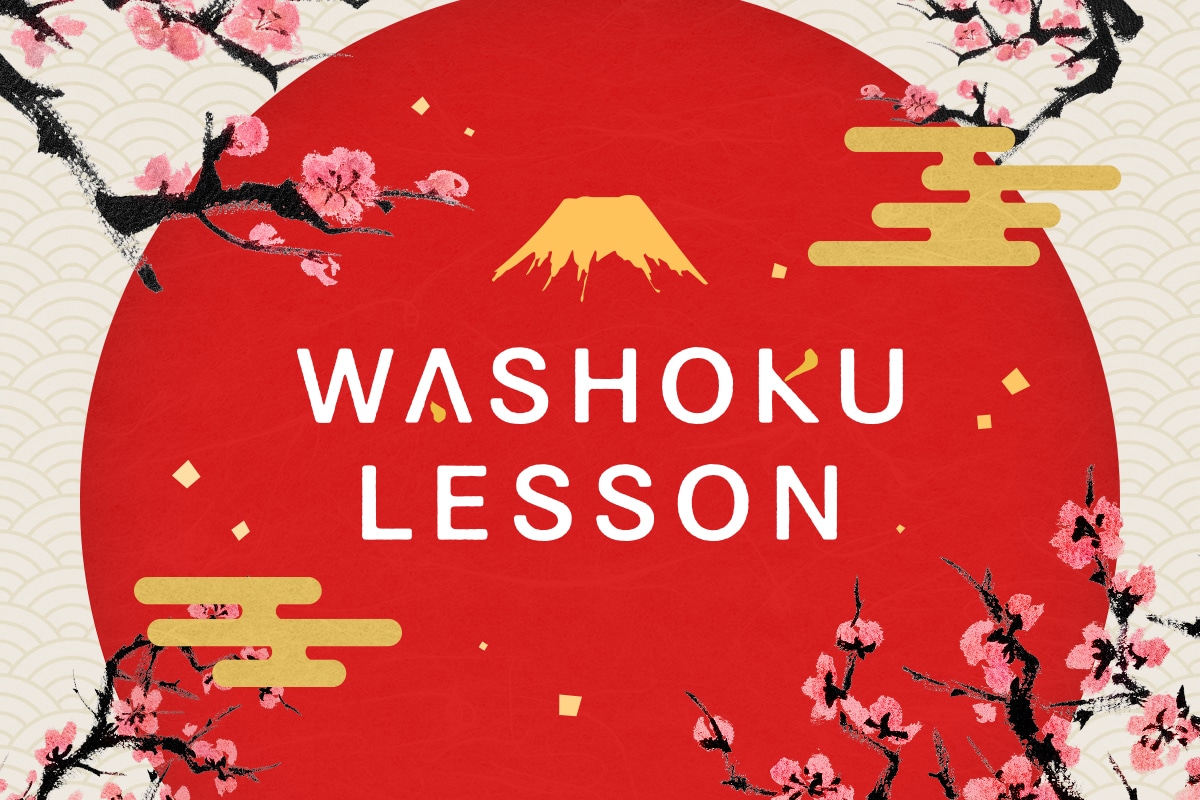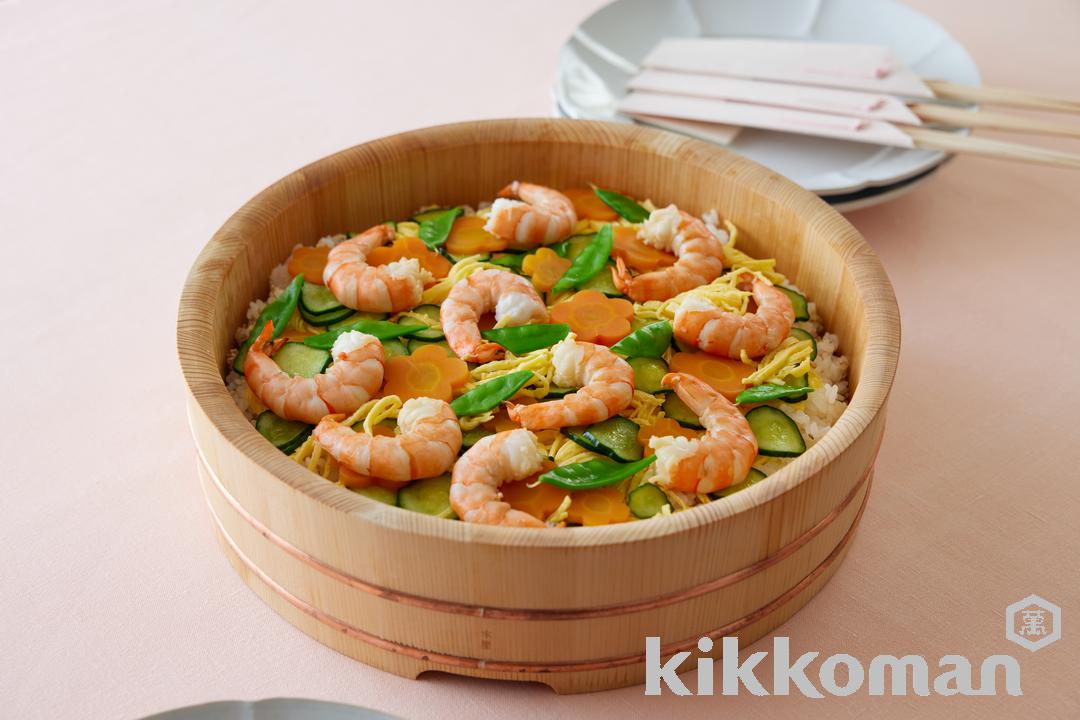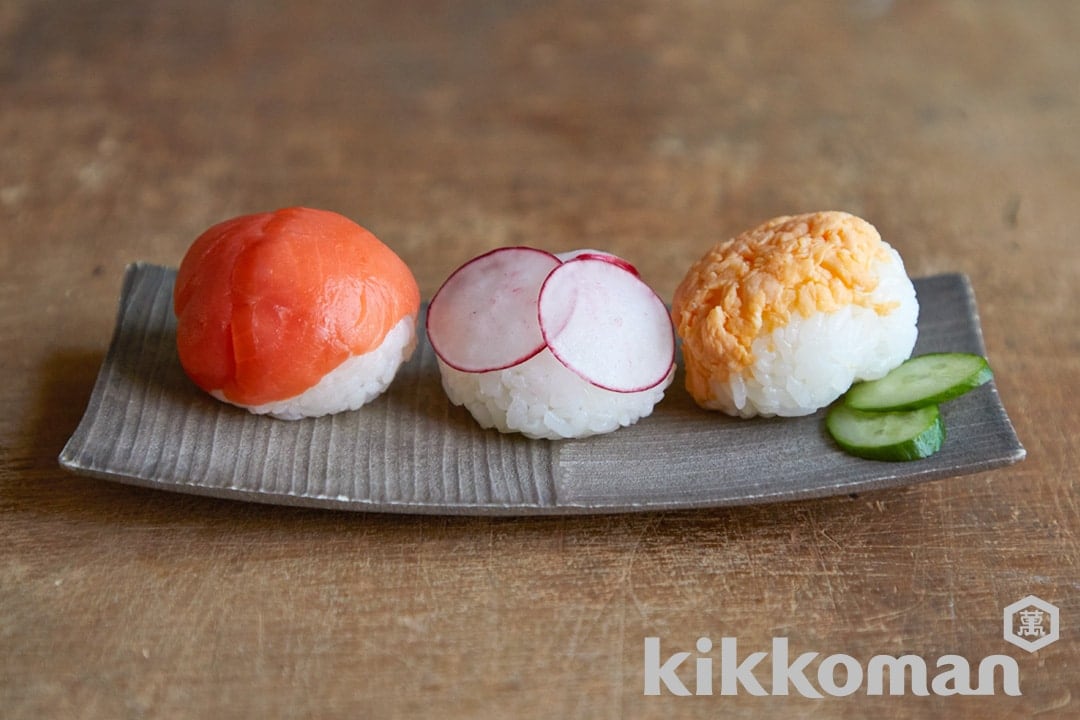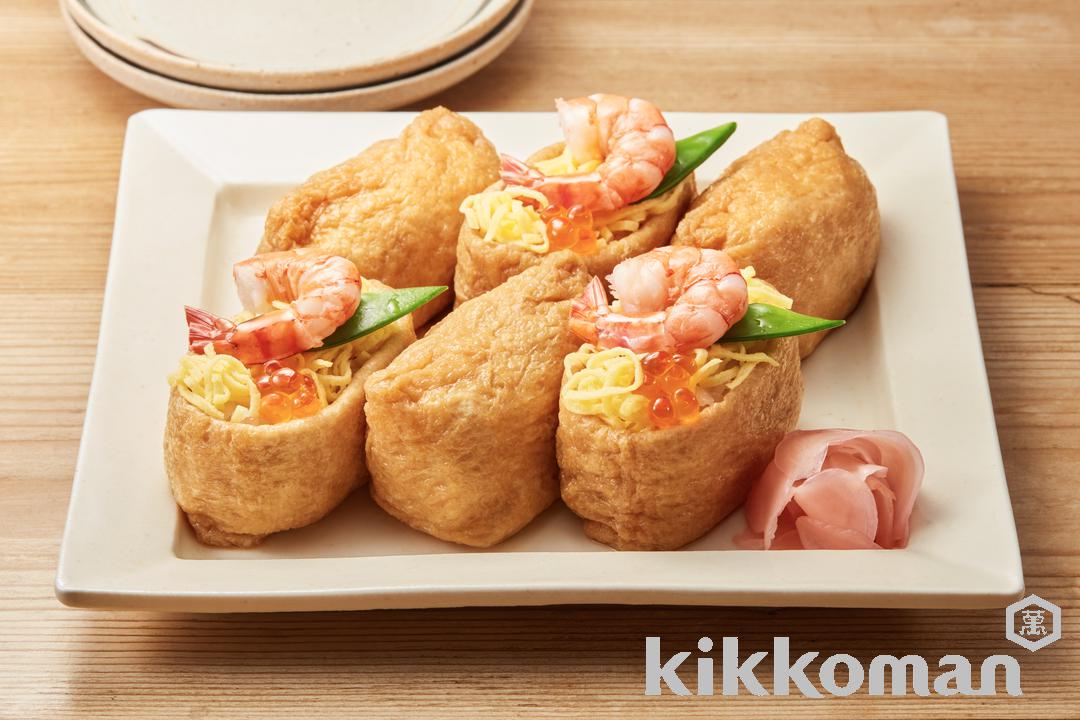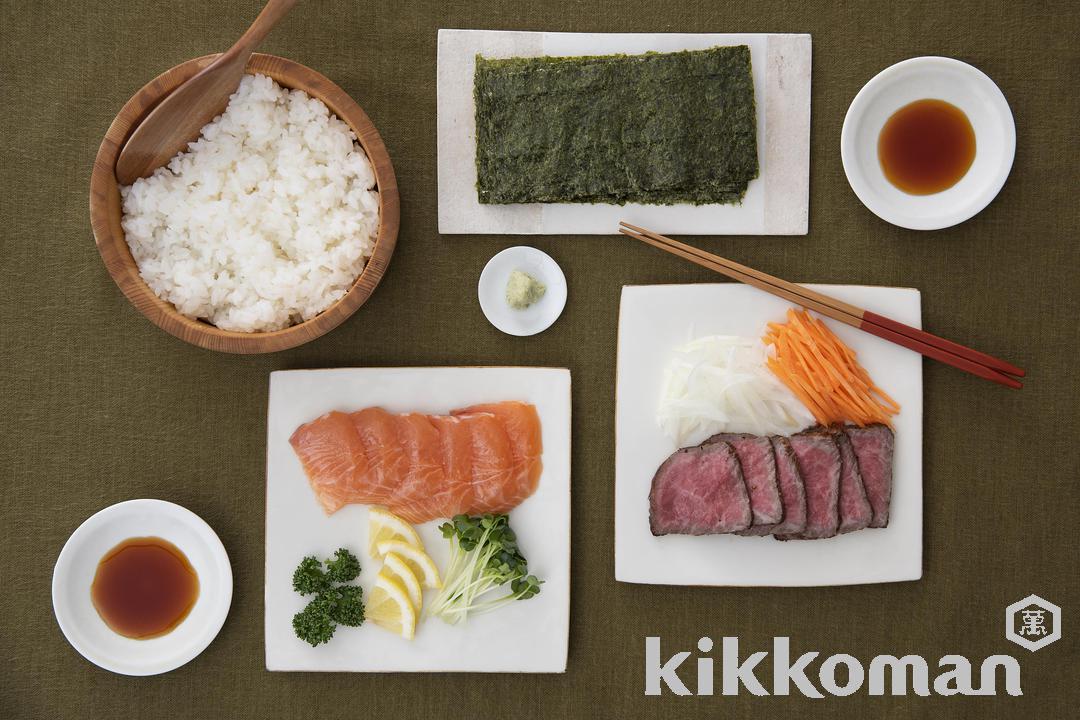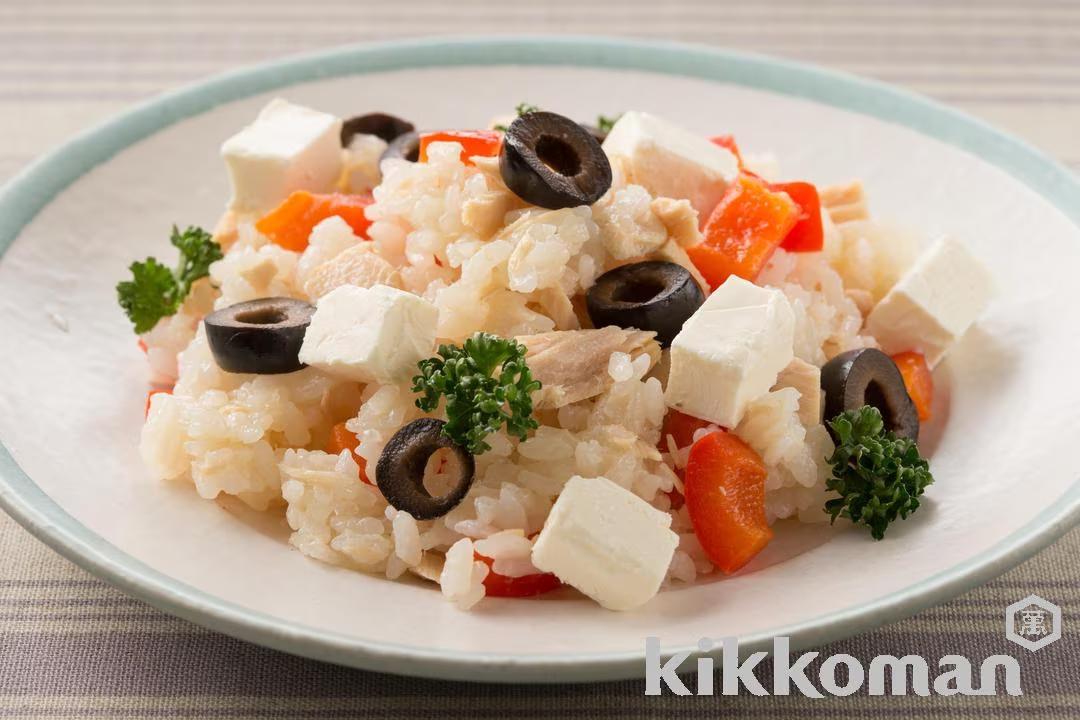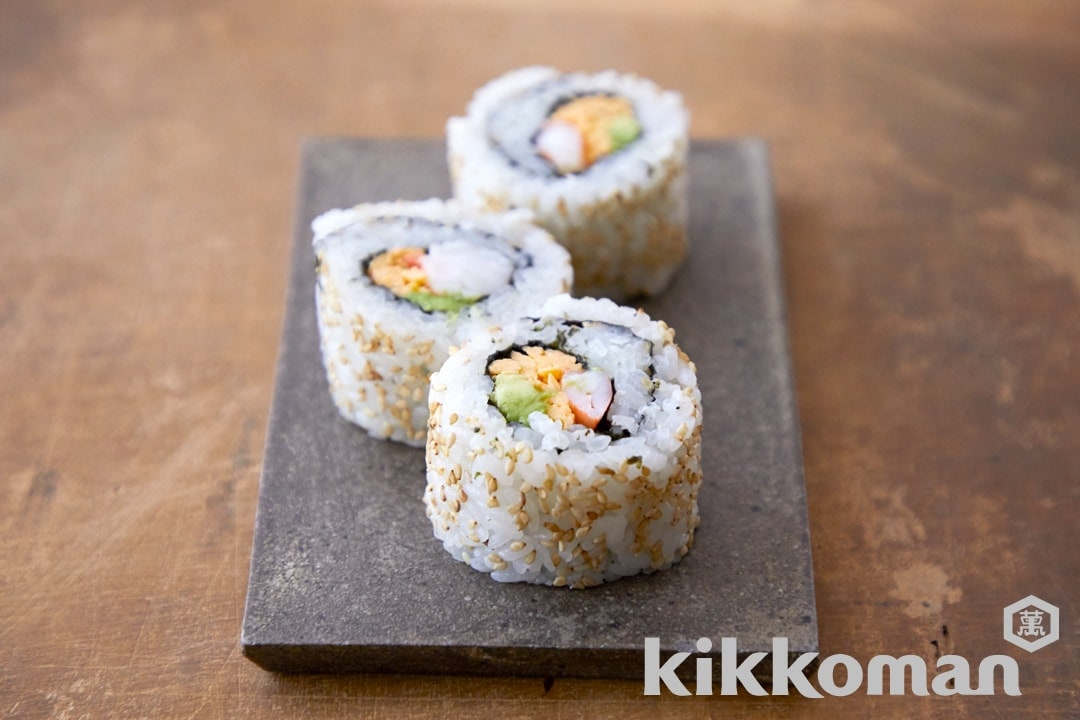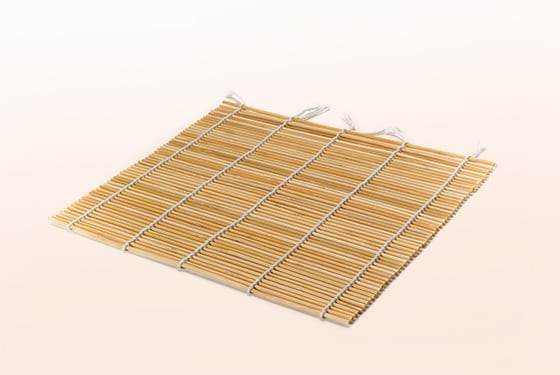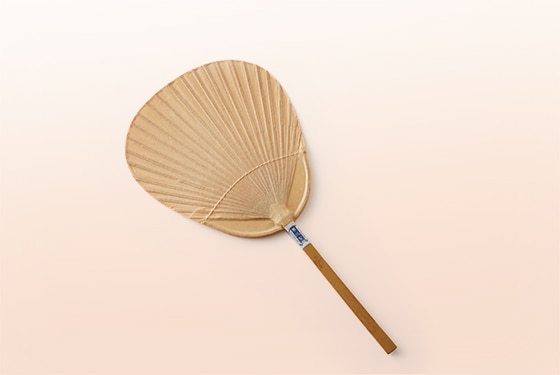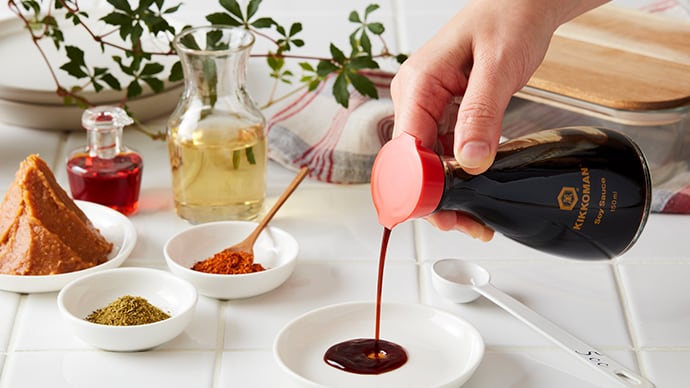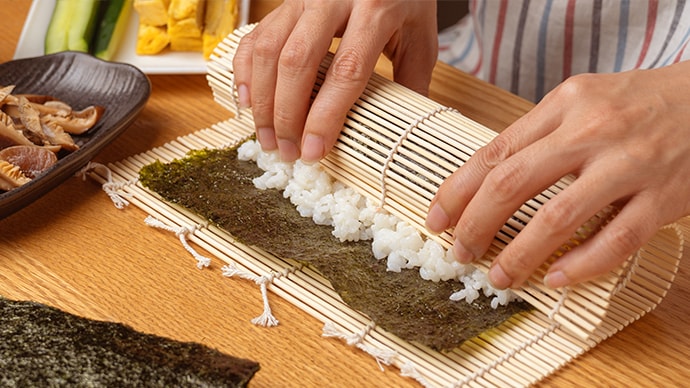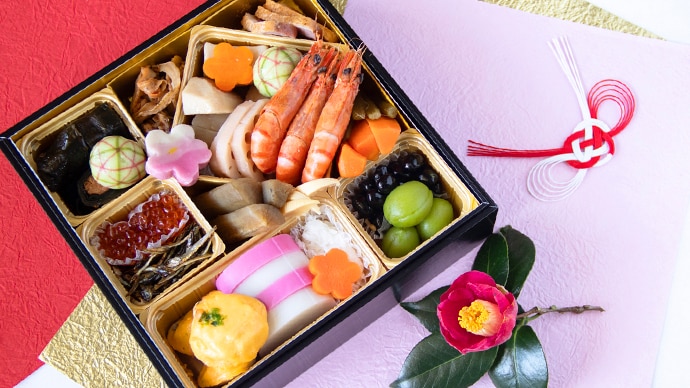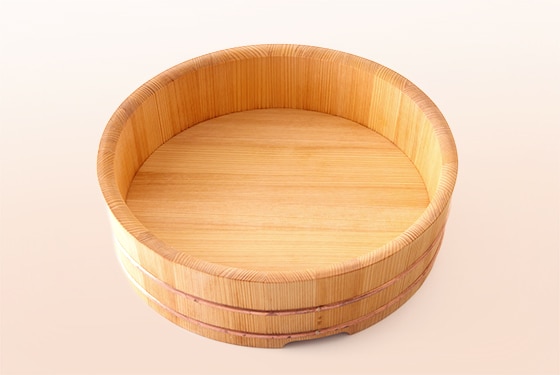
Wooden tub used for making delicious sushi rice
What is handai?
Handai / wooden rice tub (飯台 in Japanese) is a wooden tub used for making sushi rice. When freshly cooked rice is placed in the handai and mixed with sushi vinegar, the wood absorbs excess moisture, preventing the rice from becoming sticky and ensuring delicious sushi rice. In addition to making sushi rice, it is also used for serving chirashi (scattered) Sushi and other similar dishes.
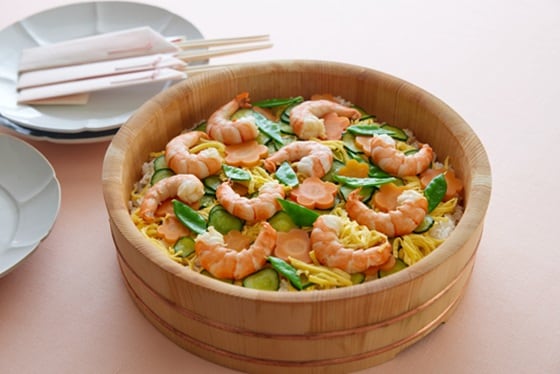
How to use
Before putting the rice into the handai, be sure to wet it with water or wipe the inside with a damp cloth. If you don't do this, the rice grains will stick to the handai, making it difficult to efficiently prepare delicious sushi rice. Once the rice is in the handai and roughly mixed, pour the sushi vinegar evenly over it and mix with a paddle using a cutting motion. After the sushi vinegar is mixed in, fan the rice with a uchiwa to cool it. Using parchment paper as an otoshibuta (drop lid), by cutting the paper slightly smaller than the pan’s lid and placing it on top of the ingredients, spreads the heat evenly with a small amount of broth.
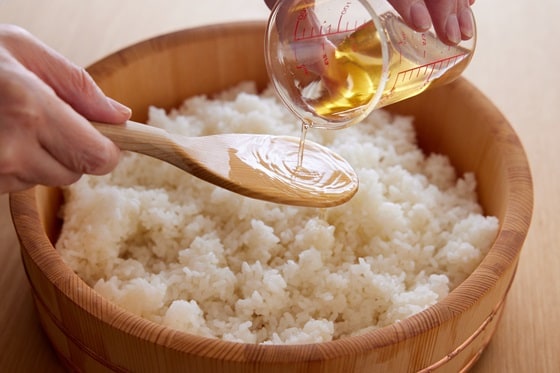
Substitute for handai: when you don’t have it
If you don't have a handai, you can use a bowl. Since a bowl cools the rice faster, immediately add the sushi vinegar to the freshly cooked rice in the bowl, mix quickly, and fan it with a uchiwa.
Trivia
There are several types of wood used to make handai, but handai made from "sawara" cypress wood is considered the best. "Sawara" has finer grain compared to other woods, making it less prone to shrinkage from drying. As a result, handai made from sawara are more durable and long-lasting.
Caution
Since a handai is made of wood, storing it while it is still damp can cause mold to grow. Conversely, if it dries out too much, the wood can shrink and come apart from the metal bands holding it together. Therefore, it is important to wash the handai immediately after use and dry it in a well-ventilated, shaded area, away from direct sunlight.
Washoku Lesson
Washoku Lesson is special content offering detailed and easy-to-understand explanations, including tips for making classic Japanese dishes as well as the many ways of enjoying these, and introductions to special Japanese cooking utensils and annual events .
Related Recipes
40min
537kcal
1100mg
30min
485kcal
1000mg
30min
403kcal
500mg


